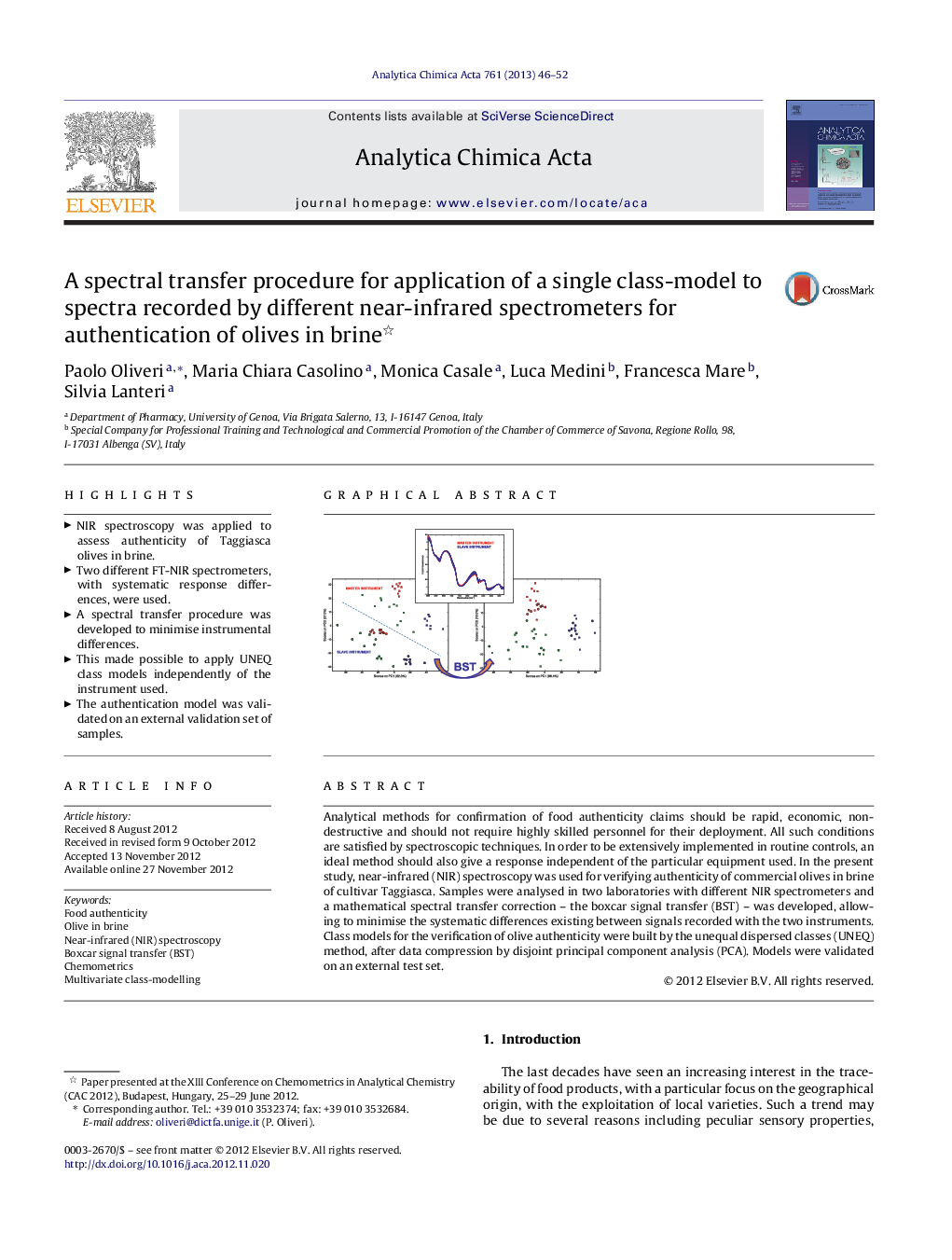| Article ID | Journal | Published Year | Pages | File Type |
|---|---|---|---|---|
| 1165171 | Analytica Chimica Acta | 2013 | 7 Pages |
Analytical methods for confirmation of food authenticity claims should be rapid, economic, non-destructive and should not require highly skilled personnel for their deployment. All such conditions are satisfied by spectroscopic techniques. In order to be extensively implemented in routine controls, an ideal method should also give a response independent of the particular equipment used. In the present study, near-infrared (NIR) spectroscopy was used for verifying authenticity of commercial olives in brine of cultivar Taggiasca. Samples were analysed in two laboratories with different NIR spectrometers and a mathematical spectral transfer correction – the boxcar signal transfer (BST) – was developed, allowing to minimise the systematic differences existing between signals recorded with the two instruments. Class models for the verification of olive authenticity were built by the unequal dispersed classes (UNEQ) method, after data compression by disjoint principal component analysis (PCA). Models were validated on an external test set.
Graphical abstractFigure optionsDownload full-size imageDownload as PowerPoint slideHighlights► NIR spectroscopy was applied to assess authenticity of Taggiasca olives in brine. ► Two different FT-NIR spectrometers, with systematic response differences, were used. ► A spectral transfer procedure was developed to minimise instrumental differences. ► This made possible to apply UNEQ class models independently of the instrument used. ► The authentication model was validated on an external validation set of samples.
